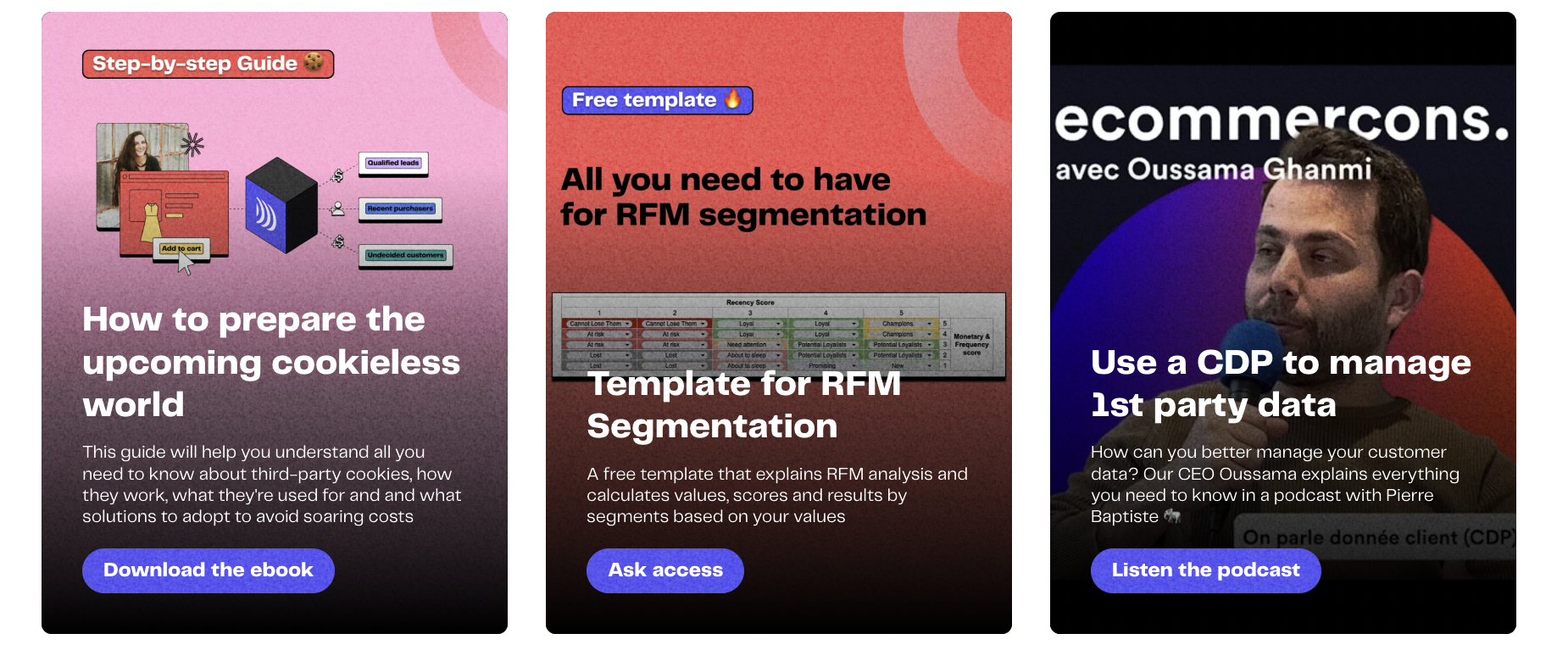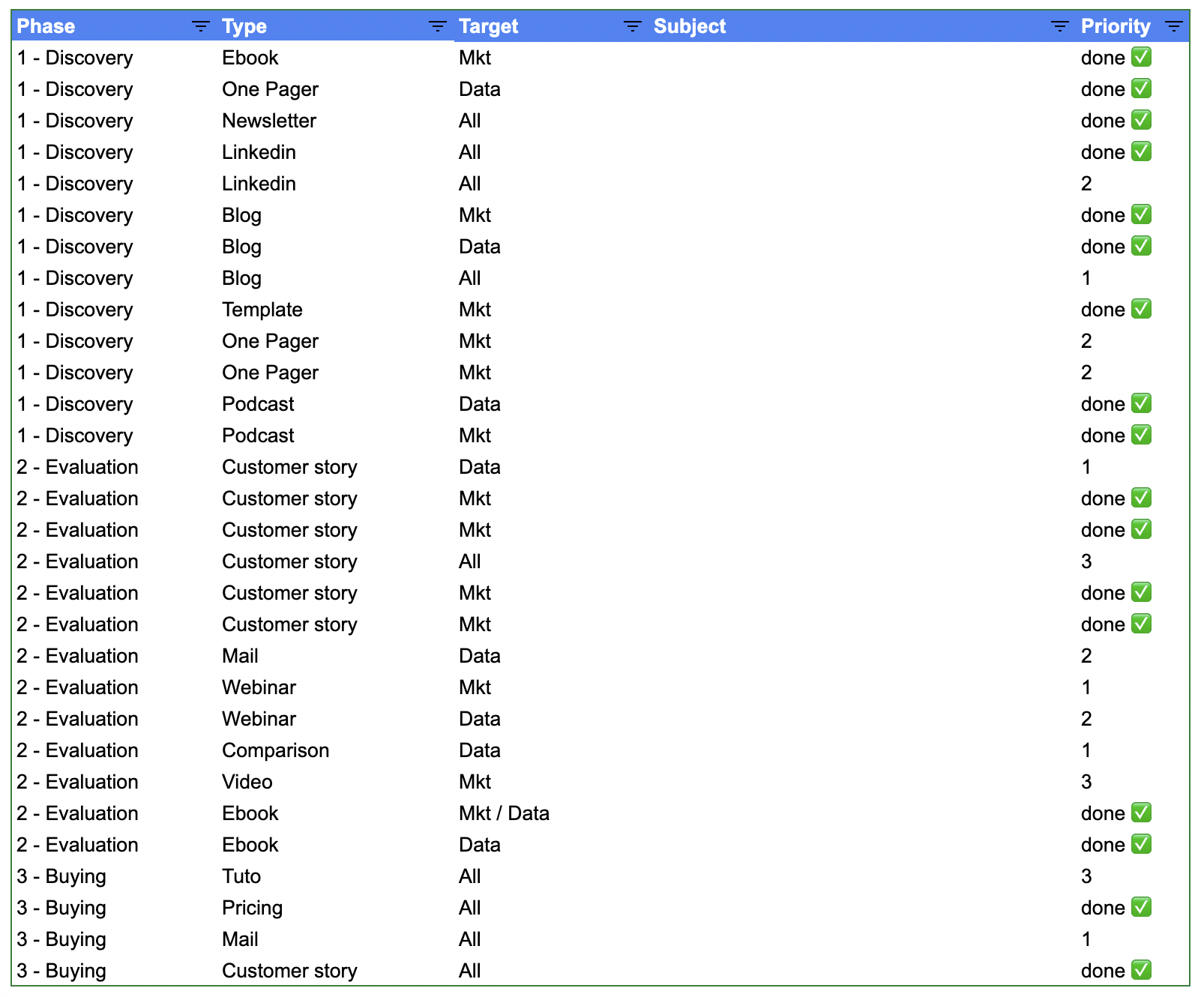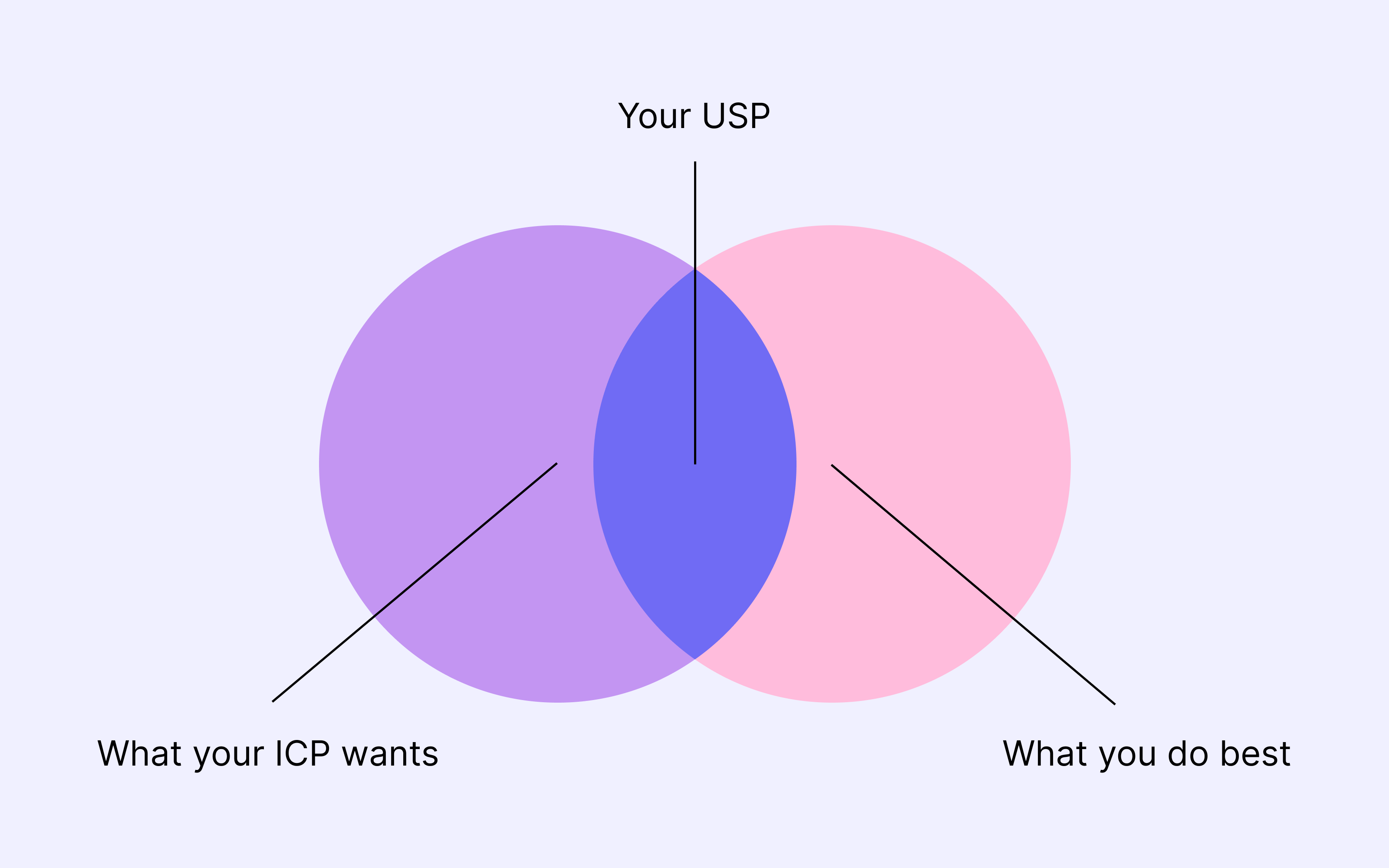Inbound marketing is a digital marketing strategy designed to organically attract your target audience to your business. Unlike traditional methods, this approach focuses on creating useful and relevant content that addresses the needs and interests of prospects.
By leveraging blog articles, videos, podcasts, and SEO optimization, inbound marketing aims to build meaningful and long-lasting relationships with customers. It is characterized by less aggressive and more respectful outreach, far from the usual direct sales pitches.
This technique is essential in the customer journey, guiding them from the initial discovery to conversion and then loyalty. Inbound marketing allows businesses to establish themselves as experts in their field, thereby strengthening customer trust and loyalty.
🤔 In this article, we will detail what inbound marketing is, the differences with outbound marketing, its main objectives, and its advantages. We will focus primarily on the best practices to implement your own inbound marketing strategy.
What is inbound marketing?
Inbound marketing is a long-term marketing strategy focused on attracting and engaging prospects with relevant and useful content specifically designed for them. This method is distinguished by its non-intrusive approach and its goal of building reliable and long-lasting relationships based on trust.
At the heart of inbound marketing is the creation of high-quality content that answers questions and captures the interest of potential customers. This includes SEO-optimized blog articles, case studies, videos, podcasts, white papers, and infographics. Each type of content aims to provide value and educate prospects at various stages of their buying journey.

Inbound marketing examples: ebook, template and podcast
Inbound marketing also leverages social networks to interact with customers and redirect them to relevant content or landing pages. It should be noted that these social media posts contribute to brand awareness and are an integral part of an inbound marketing strategy, especially when combined with other digital marketing tactics. Be sure to stay active on the Meta suite and LinkedIn (B2B persona) to increase your visibility.
The inbound marketing methodology is based on the idea that customers seek authentic relationships with brands. By providing targeted content and high-value experiences, businesses can build strong and lasting connections with their target audience. This results in increased customer trust and loyalty, which are essential for generating quality leads and increasing conversion rates.
In summary, inbound marketing represents a holistic approach that combines content creation, SEO optimization, social media use, and other channels to attract, engage, and convert prospects into loyal customers.
Inbound vs. outbound marketing
Inbound marketing and outbound marketing embody two distinct philosophies in terms of audience interaction and capture.
The main distinction between these approaches lies in their way of addressing the target audience. Outbound marketing, considered a traditional method, involves sending communications to a broad audience in hopes of generating interest and driving sales. It is typically associated with techniques such as TV advertising, billboards, cold calling, direct emails (cold emailing), in-person events, and newspaper or radio ads.

Outbound marketing: example of McDonald's
In contrast, inbound marketing relies on attracting and retaining qualified prospects through relevant content, taking a more selective and less intrusive approach, unlike outbound marketing, which targets a wider audience without necessarily understanding the specific needs or expectations of individuals.
Another notable difference concerns the measurement of effectiveness. Outbound marketing focuses on metrics like reach and impressions, while inbound marketing is more interested in engagement and lead generation.
Inbound marketing is often praised for its more attractive ROI and its ability to produce higher-quality leads, although results may take longer to materialize over a longer time frame.
Indeed, outbound marketing tends to be more expensive due to the costs associated with creating and distributing advertisements. In contrast, inbound marketing can prove more cost-effective in the long run through content production and search engine optimization.
Criteria | Inbound marketing | Outbound marketing |
|---|---|---|
Target audience | Refined audience, interested in the company’s expertise | Broad, untargeted audience |
Channels | Specialized supports: articles, videos, white papers, etc., directly on the website | "Mass market" channels: TV, billboards, radio, events, etc. |
Timeframe | Long term | Short term |
Cost | High initial investment, but more attractive ROI | Permanent and significant investments |
Success KPIs | Qualified leads | Reach, impressions |
Inbound marketing vs. outbound marketing
What are the main objectives of inbound marketing?
Inbound marketing is a holistic approach that aims at several key objectives to boost its effectiveness and maximize return on investment.
To summarize, the main objectives of inbound marketing are:
Attract visitors to the website: The first step is to capture the interest of qualified visitors to your website or blog. This attraction is achieved through the creation of relevant and engaging content, including SEO-optimized blog articles, videos, and infographics. To boost the visibility of these contents, you can invest in SEA, use organic posts, or run lead generation campaigns on social media.
Convert website visitors into leads: After attracting visitors, the goal is to convert them into leads. These conversions are encouraged through the use of contact forms, landing pages with engaging calls to action (CTAs), and downloads of exclusive content like e-books or webinars. Make sure all your CTAs are consistent with your offer and the web page context to avoid confusing your visitors.
Improve conversion rates: A key objective of inbound marketing is to increase conversion rates, moving leads to the customer stage. To achieve this, it is essential to offer personalized content and experiences that guide prospects throughout their buying journey. Lead nurturing and marketing automation are key elements for this.
To maximize your conversion rate, it is important to provide the right content to the right person at the right time. Therefore, it’s crucial to have resources for your different buyer personas, tailored to their stage in the customer journey.
Retain customers: Finally, the goal of customer retention is achieved through ongoing communication. Email campaigns, newsletters, and an active presence on social media are all ways to foster long-term relationships and promote customer loyalty. The goal is to make your customers' lives easier by providing them with resources that help them better use your products (advice, tutorials, case studies, etc.).
In any case, analyzing your results to optimize your return on investment (ROI) is essential. This analysis helps avoid wasting resources on unprofitable activities and optimizes the results obtained.
By providing useful information and educating consumers, inbound marketing strengthens the perceived value of your business and solidifies your status as an expert in your field, thereby cultivating a trusting relationship with your audience.
The advantages of inbound marketing
Inbound marketing offers several key advantages for businesses, making it a top strategy for generating qualified leads and improving business performance.
Reduced customer acquisition costs: The main strength of inbound marketing lies in its ability to significantly reduce costs associated with acquiring new customers. Unlike more expensive traditional marketing strategies, inbound marketing focuses on generating qualified leads at a lower cost. While creation costs may be higher, the costs associated with content distribution and hosting are significantly lower than those of conventional channels.
Improved customer engagement: By providing personalized and relevant content, inbound marketing fosters a deeper relationship with the customer, meeting their specific expectations and needs. This strategy encourages engagement throughout the buying journey, building solid trust between the brand and its customers through interactions on social media, blogs, and newsletters.
More qualified leads and higher conversion rates: Attracting prospects already interested in the company’s offerings means that inbound marketing produces higher-quality leads. These prospects are already interested in what is being offered, thus improving conversion rates. Data shows higher conversion rates for leads generated through inbound marketing, with a lower customer acquisition cost compared to outbound methods.
Increased brand awareness and credibility: By regularly publishing relevant and high-quality content, companies improve their brand awareness and credibility, positioning themselves as references and experts in their field. This increased credibility fosters consumer trust, making them more likely to choose your brand over the competition.
Sustainable and profitable long-term strategy: The benefits of inbound marketing are long-lasting, continuing to deliver results even after the initial investments decrease. With regular content publishing and optimized SEO practices, the company’s web visibility and ranking improve over the long term.
24/7 prospecting: With inbound marketing, the generation of qualified leads continues uninterrupted, allowing sales teams to benefit from a steady stream of interested contacts, even during off-hours, holidays, or slow periods.
How to implement a successful inbound marketing strategy?
Step 1: Set clear objectives
Defining clear objectives is essential for orchestrating a successful inbound marketing strategy. These goals should follow the SMART methodology, meaning they should be Specific, Measurable, Achievable, Realistic, and Time-bound. For example, a good objective is to “increase traffic by 1.5 times in the next 6 months” rather than just “increase traffic.”
Identifying the desired outcomes, whether to increase web traffic, improve lead generation, optimize conversion rates, or retain customers, is crucial. Use key performance indicators (KPIs) such as web traffic, lead volume, conversion rates, and generated revenue to evaluate and refine your efforts.
Step 2: Identify the content to create
At the heart of inbound marketing is content creation. It is essential to determine which types of content will resonate most with your target audience, including blog articles, videos, podcasts, white papers, case studies, and social media posts.
Each content must be tailored to meet the needs and interests of prospects at various stages of their buying journey. Building robust buyer personas is necessary to guide your content strategy and ensure it provides real value to your prospects.
In any case, you must create content for the following stages:
The “Discovery” phase: Does such a product/service meet the current challenges of the prospect? Common content types at this stage include white papers, webinars, or explanatory videos.
The “Evaluation” phase: How does the prospect find the best people/products to help with this problem? Common content types at this stage include case studies or a page comparing market solutions, with dedicated landing pages.
The “Purchase” phase: How does a prospect test or purchase your product? Common content types at this stage include pricing pages, interactive product tutorials, etc.

DinMo example: our inbound strategy
Step 3: Create a content calendar
A content calendar is essential for organizing your editorial publication. It ensures regular publishing, diversifies the types of content, and aligns each piece with your marketing goals.
The calendar should list publication dates, the topics covered, the distribution channels, and the people responsible for each task (writing, proofreading, distribution, etc.). This forward planning prevents forgetfulness and ensures consistency in your content strategy. It also allows for a comprehensive strategy that can be seamlessly executed by anyone on the team.
Step 4: Identify complementary actions
Beyond content generation and distribution, other actions are necessary for a comprehensive inbound marketing strategy. Key aspects to consider include:
SEO (Search Engine Optimization) and online advertising (SEA): It is essential to optimize your content for search engines (SEO). Additionally, you can leverage digital advertising campaigns (Google, Meta, LinkedIn) to increase visibility and drive qualified traffic to your website/dedicated content.
Engagement on social media: Social media is essential for interacting with your audience by sharing your content and communicating with your followers. By running targeted ad campaigns, you can reach a wider audience and bring new qualified leads into your CRM.
Lead nurturing and marketing automation: You can set up lead nurturing strategies to support your prospects throughout their buying cycle. Moreover, marketing automation is key to personalizing and automating your campaigns, thus maximizing prospect engagement and conversion rates. You can also use lead scoring to treat the most engaged people differently (for example, a dedicated salesperson contacting someone after they reach a certain score).
Choosing the right tools for this strategy: In any case, you will need several tools to implement your inbound marketing strategy. These include tools to optimize your SEO (SEMRush, Screaming Frog, Majestic, etc), tools to create your visuals (Figma, Canva, etc), marketing automation tools, etc.
In any case, it will be necessary for you to adopt a Customer Relationship Management (CRM) system (such as HubSpot, Salesforce, etc.) to collect and analyze customer data. Indeed, the effectiveness of your campaigns must be measured using KPIs to then adjust and continuously optimize your marketing strategy.
Conclusion
Inbound marketing is a robust strategy for attracting, engaging, and converting prospects into promoter customers. By understanding the importance of inbound marketing, its differences from outbound marketing, and grasping its main objectives and benefits, companies can develop much more effective marketing strategies.
To develop an inbound marketing strategy that works, it is essential to set clear objectives, determine the types of content to create, develop a suitable editorial calendar, and plan the various actions to take. These steps ensure unity and optimal efficiency in your marketing strategy.
Integrating inbound marketing into your strategy can revolutionize your marketing approach and significantly boost your business performance. If you want to personalize your communications and address each of your audience segments differently by providing them with the right information, a tool like DinMo can greatly simplify your life!
🌟 Feel free to contact us to learn more about our solution.


















